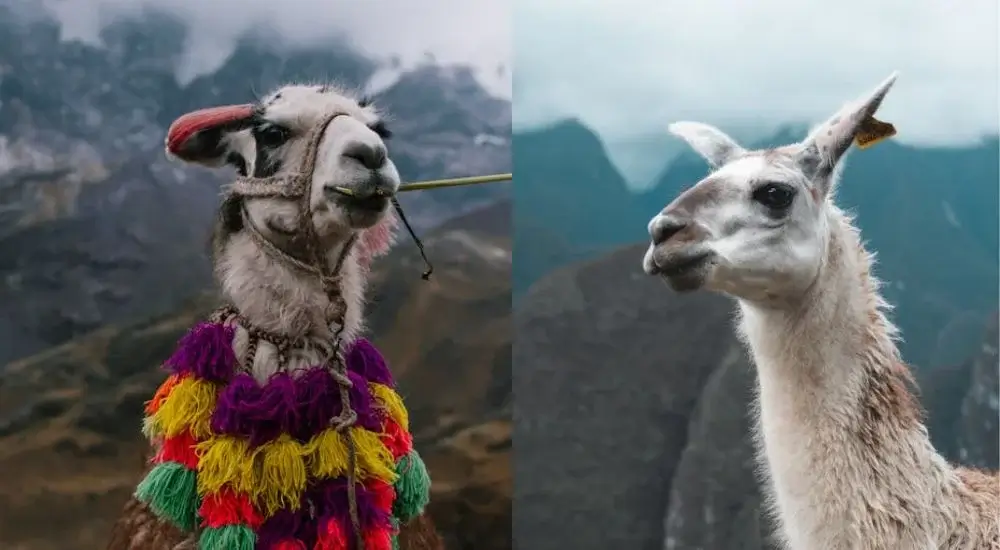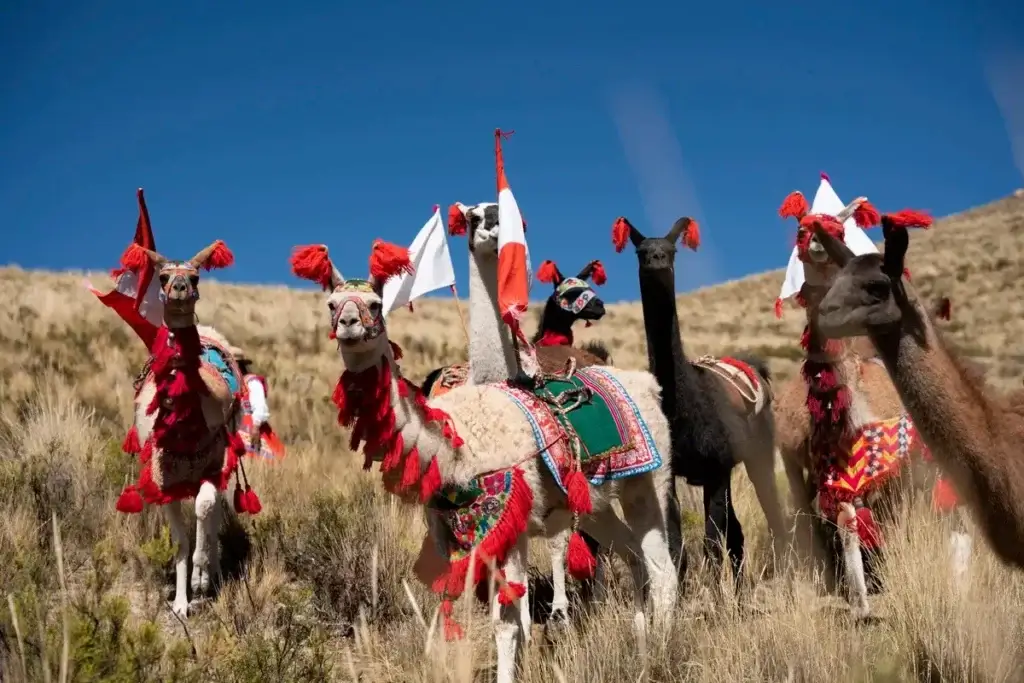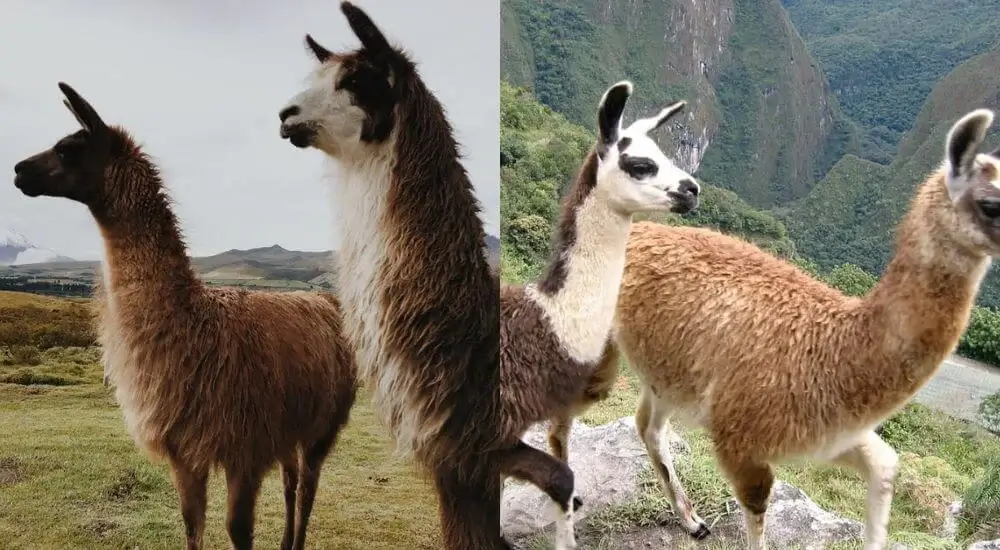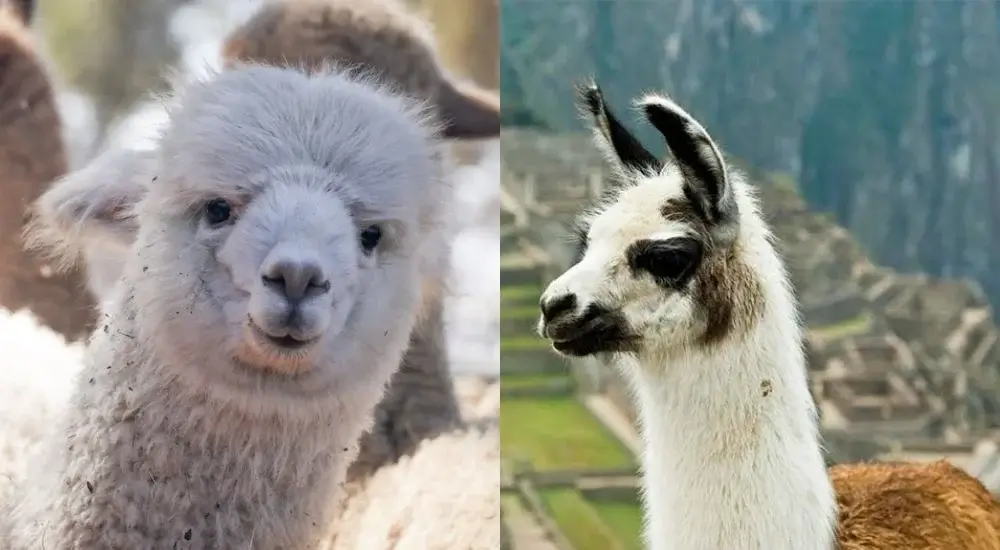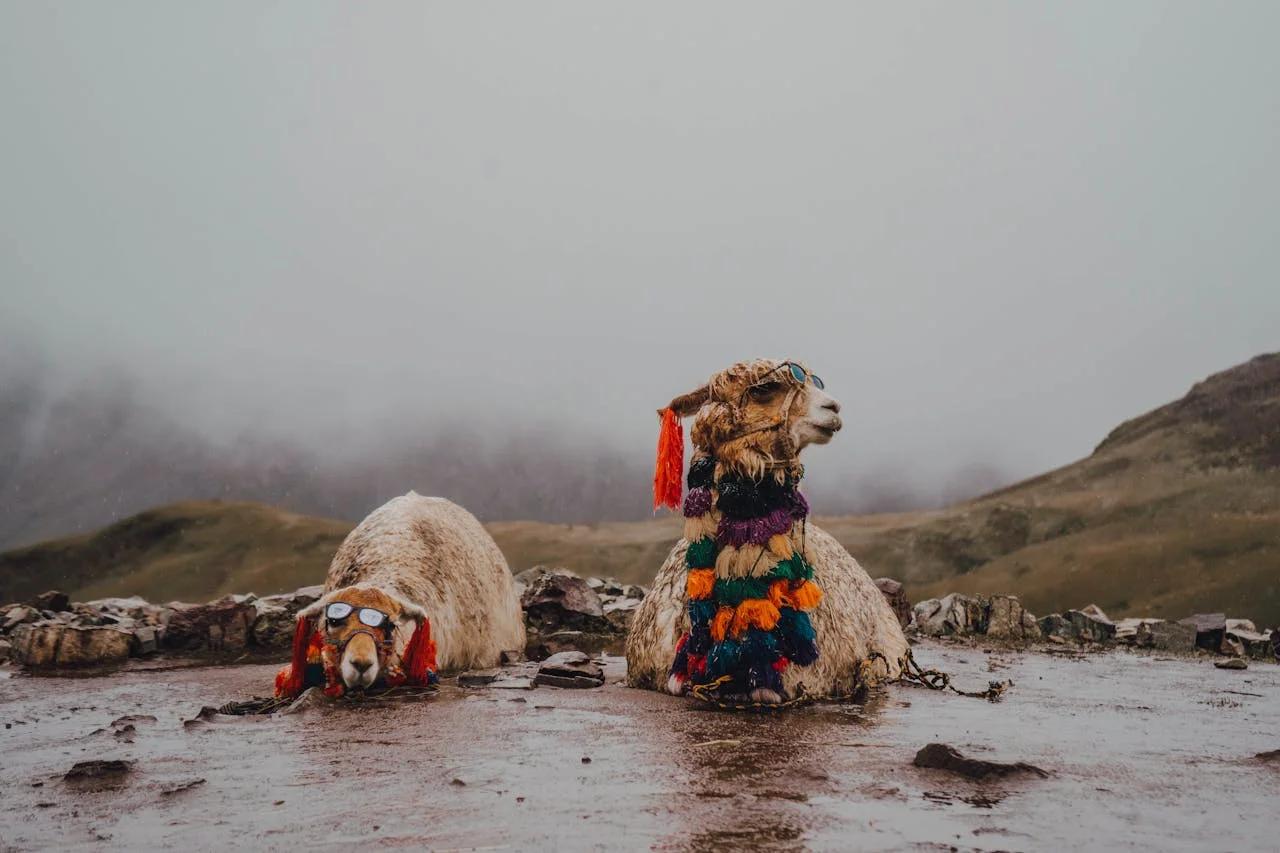What are the 4 types of llamas? Is the question many people ask. Llamas, guanacos, vicuñas, and alpacas are all South American camelid species that share a common ancestor. These furry and charming creatures have been part of Andean culture for centuries.
People often confuse alpaca and llama, two of the four species, because of their similarities. People often mistakenly refer to these camelids as "llama." Therefore, we will focus on the differences between alpaca and llama.
Origin and evolution
Alpacas and llamas are close relatives of camels, but their histories developed in the Andes. More than 6,000 years ago, the ancient inhabitants of this region domesticated these animals. The ancient inhabitants of this region bred alpacas for their fine, soft wool, while they mainly bred llamas as pack animals for their fiber and wool.
In fact, the Inca culture relied on llamas to transport wealth throughout the empire. Some regions, such as Cusco and Arequipa, still use these llamas for this purpose, referring to them as "pack llamas". Some visitors often admire these beautiful creatures on the cargo flame ride. This takes place in Callalli, the Colca Valley, and Arequipa.
Discover the difference between Alpaca and Llama
Size and strength
The llama has a long neck and is the largest of the four South American camelid species. They reach a height of up to 1.8 meters and weigh between 113 and 158 kg. Their strength and endurance make them excellent companions for carrying cargo in mountainous terrain.
They can carry up to a quarter of their own weight. The alpaca has a shorter neck, is smaller, and usually measures about 90 cm at the shoulder. Although they are not as strong as llamas, their wool is their greatest treasure.
Wool and textiles
Another way to see the difference between these camelids is through their fiber. The alpaca produces a fast-growing, fine, and soft wool that is highly valued in the textile industry, being far superior to that of the llama, although not as valuable as that of the vicuña.
Alpaca wool is warm, light, and perfect for the manufacture of high-quality garments such as sweaters, slippers, and gloves. In contrast, llamas have a thicker outer layer of hair and a thinner inner layer.
Face and appearance
The key differences between llamas and alpacas lie in their ears, shape, and size. Llamas have longer, curved ears, while alpacas have smaller, symmetrical, and pointed ears. Additionally, alpacas have more hair on their faces and heads compared to llamas, giving them a more beautiful and tender appearance.
Personality
In addition to physical differences, the alpaca and the llama also have different personalities and behaviors. The alpaca is more shy and reserved, but its gentleness and calmness endear it to those who know it well. In contrast, the llama tends to be more independent and protective of other herds, including alpacas.
How to Tell the Difference Between a Llama and an Alpaca at a Glance
If you're traveling in Peru and struggling to distinguish between a llama and an alpaca, here are some quick tips:
- Ears: Llamas have long, curved ears, while alpacas have smaller, pointy ears.
- Size: Llamas are larger and more robust, reaching up to 1.8 meters (5.9 feet) in height, while alpacas are smaller and more compact.
- Face: Alpacas have a rounder face covered in wool, giving them a cuter appearance. Llamas, on the other hand, have longer faces with less hair.
- Temperament: Llamas are more independent and can be protective, while alpacas tend to be more docile and calm.
Sustainable Tourism and Ethical Encounters with Llamas and Alpacas
If you want to interact with these animals ethically, follow these tips:
- Avoid riding llamas or alpacas, as they are not accustomed to carrying people.
- Choose responsible tours that respect animal welfare and do not use llamas solely as tourist attractions.
- Buy authentic alpaca wool products from local cooperatives that support Andean artisans.
- Maintain distance and respect their space, especially in natural areas.
Frequently asked questions
Are there llamas or alpacas on Machu Picchu?
Machu Picchu is known to have only llamas roaming among the archaeological ruins.
Alpacas, on the other hand, are not usually found at Machu Picchu but are common in other parts of Peru, especially in the Andean highlands, where they are raised for their wool.
Why does a llama spit?
When Llamas feel threatened or annoyed, they spit in defense. Even though they rarely spit at people, it's advisable to maintain a safe distance to prevent them from hitting you. This behavior is most common when they feel stressed.
Do alpacas spit?
Alpacas rarely spit, and if they do, it is much less common than in llamas. In general, alpacas are more docile and less likely to exhibit this defensive behavior. However, in situations of stress or discomfort, some alpacas may spit, which is rare. Llamas tend to spit or kick more frequently than alpacas.
Why do Peruvians dress up as llamas?
During traditional festivities and cultural ceremonies, Peruvians dress llamas in colorful adornments as a way of celebrating and honoring their connection to these animals. Adornments may include hand-woven blankets, tassels, necklaces, and other elaborate accessories, which highlight the cultural importance of llamas in the history and daily lives of Andean communities. In addition, dressing llamas can serve a functional purpose by protecting them from the cold of the high mountains.
What are the four species of South American camelids?
The four camelid species are:
- Llama
- Alpaca
- Vicuña
- Guanaco
Alpacas and llamas are domesticated species, while vicuñas and guanacos remain mostly wild.
How can I tell the difference between an alpaca and a llama quickly?
You can distinguish them by:
- Ears: Llamas have long, curved ears; alpacas have small, pointed ears.
- Size: Llamas are much larger and stronger.
- Face: Alpacas have a round, fluffy face; llamas have a longer, sleeker face.
- Temperament: Llamas are more independent; alpacas are more docile.
Alpacas and llamas are the Andes' living treasures. Their wool, strength, and presence in Andean culture make them special beings. If you are close to visiting Peru and need to know about our different tours, you can contact the experts at Andean Travel Experience. As you explore Peru's wonders, do not miss the opportunity to admire and appreciate these fascinating animals and their differences, which definitely make them unique!
Ready to discover Peru and meet these incredible creatures? Contact Andean Travel Experience today and let us guide you on a journey filled with culture, adventure, and the charm of the Andes. Your unforgettable Peruvian adventure awaits!
Next time you visit Machu Picchu, keep an eye out for these photogenic inhabitants!

